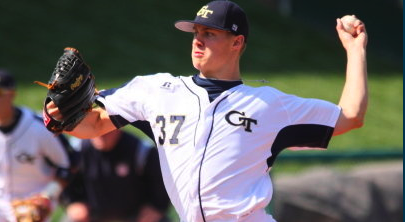
Catching up on some notable performances from 2010 Cape Leaguers . . .
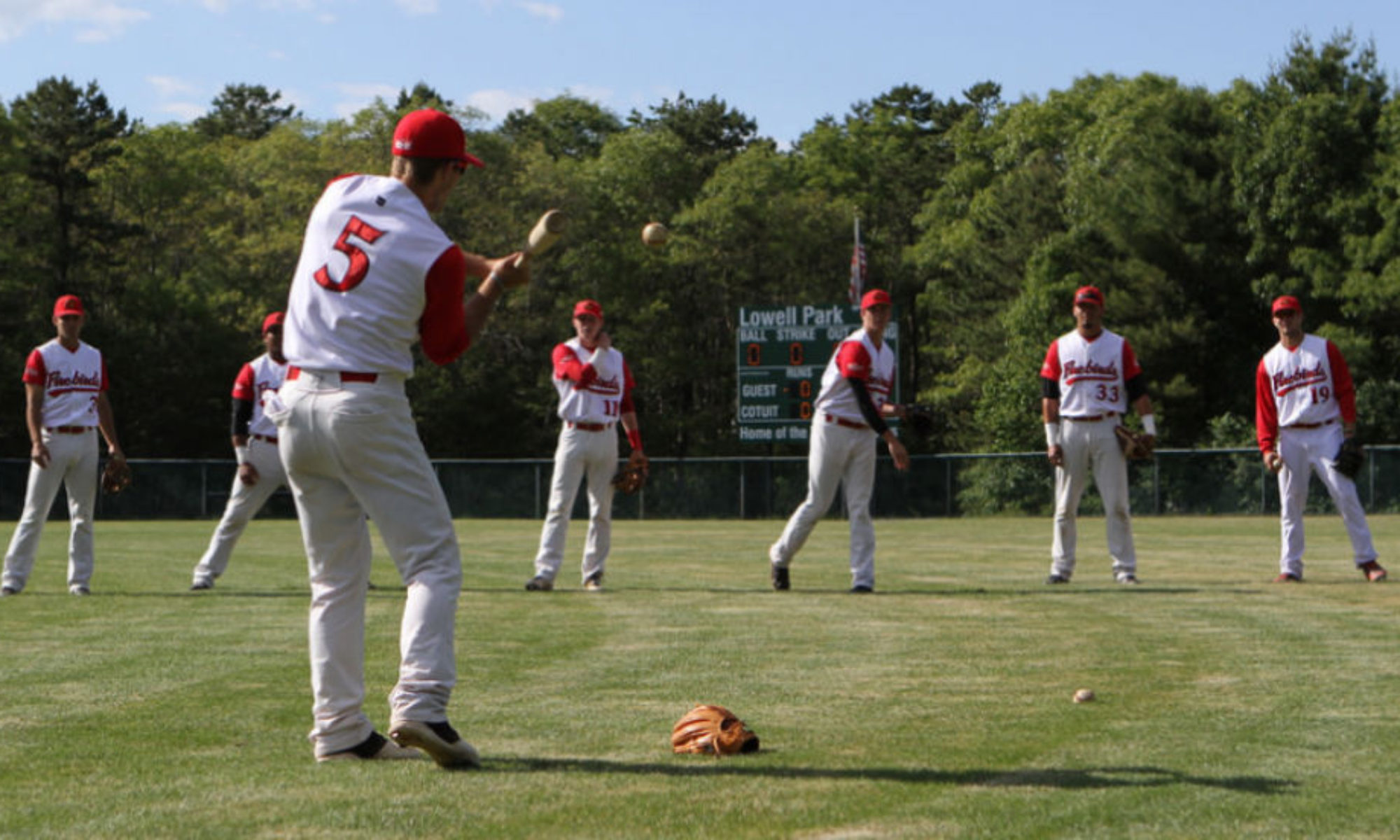
Covering the Cape Cod Baseball League

Catching up on some notable performances from 2010 Cape Leaguers . . .
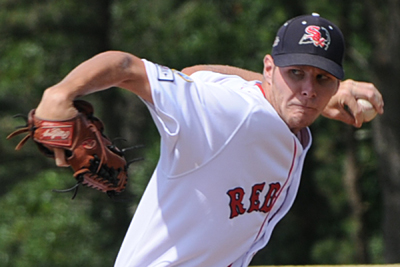
When Florida Gulf Coast travels to Miami tonight at 6 p.m., the Eagles will be pushing hard to get a signature victory.
Really hard.
Chris Sale, the Cape’s outstanding pitcher in 2009, will get the start for FGCU against the 10th-ranked Hurricanes, despite the fact that it’s a mid-week game. FGCU doesn’t have a conference series this weekend, so with the chance for a marquee victory, Sale is getting the ball.
FGCU is in its third year as a Division I program and is eligible for postseason play for the first time. Sale was rated by Baseball America as the nation’s fifth-best college prospect.
Miami has three 2010 Cape Leaguers: Harold Martinez, Nathan Melendres and Stephen Perez.
Naples Daily News: FGCU heads to Miami ready to take on Hurricanes on Wednesday
Live Stats
**In case you missed it, this game got postponed.
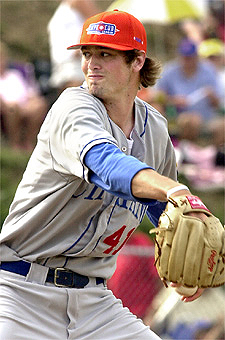 Andrew Miller
Andrew Miller
Chatham 2004 & 2005
Pitcher
North Carolina
My fascination with the Cape Cod Baseball League was sparked by two things: Twinkie Night and Andrew Miller.
The Twinkies might have held sway for a little while — they threw them into the stands! — but my interest was really cemented in the summer of 2004, when I read about a player named Andrew Miller.
I had been a Cape League fan for awhile. The prospect angle always seemed kind of cool — I liked knowing that I saw players before they were Big Leaguers — but it was nothing more than kind of cool. I liked the baseball, I liked foggy nights after sunny days, and I liked sitting on the hill at Veterans Field.
And then Miller. He brought it all together.
He was 6-foot-6, the article told me, and that was kind of a big deal. He was left-handed, also a big thing. His fastball was fast and his curveball dropped off the table. He had been a third-round pick out of high school, and he was coming to Chatham. For the first time, I was excited not just about the baseball, but about a player. A prospect.
I was not alone.
That first summer — after striking out 88 in his freshman year with the Heels — Miller generated a lot of buzz. I even remember reading about him in a Peter Gammons notes column. Miller ended up starting seven games. He went 2-0 with a 2.03 ERA and 48 strikeouts in 40 innings.
That could have been the end of the line, had Miller taken the familiar freshman star path — Cape League, huge sophomore year, then Team USA. Miller had the huge sophomore year — 104 strikeouts — but when summer rolled around, he was back in Chatham.
And he was better than ever. He went 6-0 with a 1.77 ERA and 66 strikeouts in 49 innings. He won both the top prospect and outstanding pitcher awards, a rare feat.
In addition to the impressive body of work, two particular nights stand out in my mind. On July 20, he faced off against Wareham’s Daniel Bard, his North Carolina teammate. The two would end up going 1-2 on BA’s top prospect list, and on this night, they toed the rubber for the best pitching match-up I can remember. I was there, and I have never seen so many scouts at a regular-season game. Miller ended up striking out nine, Bard six. Neither factored in the decision, but it was still a night to remember.
The other night lives only in the memory of those who were there — and in Cape League lore for the rest of us. It happened in 2004. It was a foggy night. Miller struck out the first three batters he faced. Then the next three, and the next three after that. In the fourth inning, he struck out the side again. Twelve hitters, 12 strikeouts — and the game was fogged out, never to be recorded.
It’s a shame that Miller didn’t get to continue, but in looking back, I think it’s kind of cool that it happened the way it did. A foggy night, an unhittable pitcher, no official history of it — it only adds to the legend of Andrew Miller on the Cape.
And it’s only one of the stories. John Schiffner told one to Baseball America in 2005, when Miller was named the summer player of the year: “I’m not going to say this kid’s name, but it was a righthanded hitter. He swung and missed at a slider that hit him right in the thigh. I’d seen him hit guys in the back foot on slider strikeouts last summer, but this thing was thigh-high and he swung as it hit him. He had no chance. We kept it very calm (in the dugout) because we didn’t want to show him up. But some guys had to bite their sleeve to not laugh out loud.”
The legend just kept growing, and it’s the reason Andrew Miller is the Right Field Fog Player of the Decade.
“He’s the Randy Johnson of the Cape League,” Yarmouth-Dennis manager Scott Pickler told Baseball America in 2005. “There’s a fear of facing Andrew Miller among the kids. There’s no one else like that in the league.”
And no one else like that in the decade.
After the Cape
Miller was a candidate to be the No. 1 overall pick in 2006, but he ended up dropping to the Tigers at the sixth spot, largely because of his high asking price. He made his Major League debut the same year, but he has had an up-and-down big-league career so far and has spent parts of every season in the minors. In 2007, he was traded to the Marlins in the Miguel Cabrera deal. Pitching for Florida in 2009, Miller had a 4.84 ERA with 59 strikeouts in 80 innings.
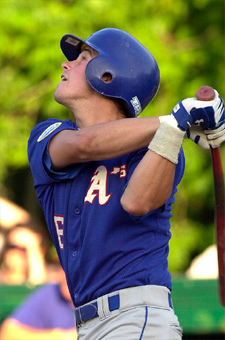 Evan Longoria
Evan Longoria
Chatham 2005
Infielder
Long Beach State
In the last four seasons, anybody who’s having a great offensive summer — especially if he’s a shortstop — is bound to draw an Evan Longoria comparison. Longoria’s 2005 season is the first one that pops into my head when I think of great offensive seasons; his name is the first that pops into my head when I think of offensive stars.
It’s not surprising that so many get compared to him. That’s what happens to great players.
The things is, no one really compares.
Sure, some guys ended up with better numbers. Grant Green — a West Coast shortstop like Longoria — comes to mind. Gordon Beckham’s 2007 season was also on par.
But for every criteria that matters when it comes to defining a Cape League star — from buzz to national attention to perception to statistics — Longoria remains a step above.
In the 2000’s, he was Cape Cod’s brightest offensive star.
Longoria came to Chatham from Long Beach State. He had started his college career at Rio Hondo Community College. After a year there, he made his way to Long Beach, where he moved to third base and played alongside star shortstop Troy Tulowitzki. I’m not sure anyone could have guessed then that, by the next spring, Longoria would be a bigger star than Tulowitzki.
Longoria’s summer on the Cape paved the way for that to happen. He had hit .320 for the Dirtbags with five home runs. On the Cape, he rocketed into another orbit.
After getting off to a 1-for-11 start, Longoria hit his stride in Chatham’s fourth game, going 2-for-4 with a homer and three RBI. The next day, he went 4-for-4, and from that point on, his name was a fixture on pretty much every leaderboard. In one six-game stretch starting on June 20, Longoria hit .440 with two home runs, five RBI and a slugging percentage of .800.
By July, it was clear that Longoria’s emergence was going to be one of the year’s biggest stories. He played three different positions for the A’s, but wherever he was, he kept hitting. For much of the summer, he was a legitimate Triple Crown candidate.
In the end, his average dipped slightly, but the numbers were still more than enough to earn him MVP honors. He hit .299 with a league-best eight home runs and 35 RBI. He also led the league in slugging percentage, finished third in hits and second in extra-base hits.
The most remarkable thing might be that Longoria was doing this in a league dominated by power pitchers. When I look back on it, I don’t think of 2005 as a year like ’07 or ’09, when a dearth of power arms helped set the stage for gaudy offensive numbers. Longoria was the only player in his class having a big all-around offensive summer. In a pitching-heavy all-star game, he had two of the game’s 10 hits.
Scouts took notice, of course. He was rated by Baseball America as the league’s third-best prospect, and his scouting report included this gem from Falmouth manager Jeff Trundy: “He’s a scary hitter.”
And these days, judging from how often his name still gets mentioned, I think everyone remembers just how scary he was.
After the Cape
Longoria was drafted third overall by Tampa Bay the next June. When he hit 26 homers in his first full pro season, he became one of the game’s top prospects. He was in Tampa by 2008, and he hit 27 home runs en route to A.L. Rookie of the Year honors. In 2009, he cemented his status as one of baseball’s brightest young stars, hitting .281 with 33 home runs and 113 RBI.
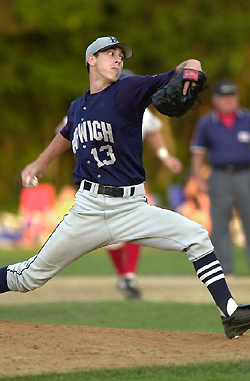 Tim Lincecum
Tim Lincecum
Harwich 2005
Pitcher
Washington
Well you definitely know who he is.
No Cape League alum in recent years has become as big a star as Lincecum, who has won two Cy Young Awards in three Major League seasons. And I’m not sure any Cape League alum has ever become a star so quickly.
Could we have seen it coming? I don’t think anyone foresaw this much success, this soon.
But Lincecum had one heck of a summer in 2005. It flew under the radar a bit, and scouts still weren’t sure about him.
In retrospect, though — whether you let his later success color the perception or not — it was pretty amazing.
Lincecum came to Harwich in ’05 after striking out 131 batters in 104 innings at Washington. He was one of the nation’s best pitchers, but he was somewhat of an enigma because of his stature and his small frame. He didn’t look like a power pitcher. As a draft-eligible sophomore, Lincecum had lasted until the 42nd round in June of ’05.
In his first Cape League appearance, he came out of the bullpen and struck out all but one of the batters he faced in two innings. A few days later, he made his first start and struck out 11 in eight innings.
It looked like he was on his way to a special summer, but after making two more starts, an injury forced him to the bullpen.
It did not stop him from having that special summer. In fact, it may have enhanced it. Lincecum ended up making a total of 19 appearances. He saved seven games and finished with an ERA of 0.69, best in the league.
And that, amazingly, wasn’t the only leaderboard Lincecum found himself on. Despite logging about half the number of innings as his counterparts, Lincecum had 68 strikeouts, good for fourth in a stacked league. He reached that number in 39.1 innings. That’s a K/9 of 15.7. If he had stayed as a starter — even with the strikeout rate invariably going down — he might have gotten to 90, a number no one’s come close to in a long time.
As far as dominance goes, few Cape League pitchers have ever been better.
“He just makes guys look silly,” Harwich manager Steve Englert told Baseball America that year. “I’ve never seen kids of this caliber look this bad like they do against that breaking ball.”
Englert knew what he was talking about it; I’m not sure the rest of us quite understood. I wasn’t blogging in 2005, but I followed the league. Like many others, I was more intrigued by Miller, Longoria, Norton and Bard, the stars of a pretty special year. That’s why Lincecum isn’t No. 1 on this list. I considered him — the numbers are good enough — but that summer, the buzz wasn’t quite there yet. Baseball America ranked Lincecum as the Cape’s 18th best prospect, couching the praise for him with this: “But because he’s just 6 feet tall and has an over-the-top delivery, scouts wonder if he’ll hold up and project him as more of a reliever.”
Yeah, about that.
After the Cape
Lincecum got drafted 10th overall in 2006. He made 13 minor league starts, allowed seven runs and struck out 104. He started 2007 in Triple A then made it to San Fran, where he was pretty awesome from the start. He won the Cy Young in 2008 and again in 2009.
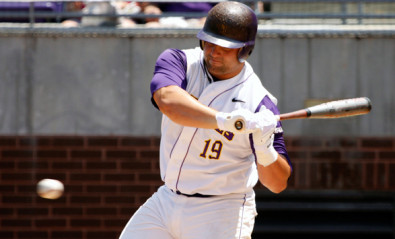
A weekly look at a college baseball game/series with Cape connections . . .
No. 3 Virginia at No. 16 East Carolina
Friday, 3 p.m.
Live Stats
Live Video
Saturday, 2 p.m.
Live Stats
Live Video
Sunday, 1 p.m.
Live Stats
Live Video
The series everyone around the country is watching is one Cape League fans will like, too. Virginia and East Carolina have sent dozens of players to the Cape in the past few seasons and they’ll do it again this summer. So we’ve got a nice mix of alums and future stars in this series.
It also should be a pretty good series. The Cavaliers come in as the third-ranked team in the country, poised for a big season. East Carolina is ranked 16th and has an early chance to make a major statement.
Danny Hultzen (Hyannis ’10), one of the top freshmen in the country last year, is starting for Virginia in game one, against East Carolina’s Seth Maness (Bourne ’10). In game two, Robert Morey (Bourne ’10) goes against Kevin Brandt (Hyannis ’09 & ’10).
Of course, 2009 MVP Kyle Roller will be holding down the middle of the order for East Carolina. For Virginia, you’ve got Jarrett Parker, Dan Grovatt and Phil Gosselin.
Should be interesting to see what happens.
2010 Cape Leaguers
East Carolina
Kevin Brandt, Hyannis
John Wooten, Harwich
Joseph Hughes, Harwich
Tyler Joyner, Bourne
Virginia
Danny Hultzen, Hyannis
Tyler Wilson, Hyannis
Steven Proscia, Harwich
John Hicks, Harwich
Will Roberts, Bourne
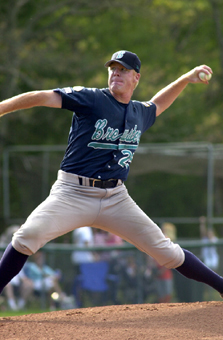 Matt Goyen
Matt Goyen
Brewster 2004
Pitcher
Georgia College
Small-school players who find their way to the Cape are always looking to make a big impression.
Matt Goyen did it quickly in 2004, and it was bigger than big.
The lefty from D-II Georgia College and State University made his first start for Brewster on June 19, the third day of the season. He struck out six and allowed just two hits in six shutout innings.
It was just the beginning. In his next start, Goyen went seven shutout innings, striking out 11, walking one and allowing just one hit.
And then came something really special. On June 30 at Orleans, Goyen authored what I believe to be the best single start of the decade. In a 1-0 Whitecaps victory, Goyen tossed a complete-game, two-hit shutout with 18 strikeouts and no walks. Both hits came in the first inning; Goyen retired 26 straight to finish the game. He also struck out the final seven batters, and the 18 he finished with set a Brewster single-game record. He was three shy of the Cape League record.
All in all, an incredible performance. But it wasn’t the only impression Goyen made. The guy who had the best single start also had the best single season by a pitcher.
He finally allowed a run in his fourth start, but he always had a hold on the top pitcher label. He ended up with a 5-2 record, a 1.25 ERA, 80 strikeouts and 14 walks in 57.2 innings. He allowed eight earned runs the whole summer, and his K/9 was 12.6, which is pretty unheard of for a starter. The 80 strikeouts led the league by a wide margin, and that number ranks second in the decade. It also set a Brewster record that was held by Billy Wagner.
Goyen was fifth in the league in ERA and tied for third in wins. He was named the league’s Outstanding Pitcher, even with Dallas Buck striking out 65 with a 0.77 ERA.
I still think it was an easy choice.
After the Cape
Goyen’s breakout performance vaulted him into the third round of the 2005 draft, where he was taken by the Marlins. In three minor-league seasons, he never duplicated his summer success; 2007 was his last year.
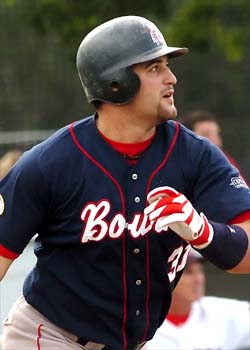 Kyle Roller
Kyle Roller
Bourne 2008 & 2009
DH/First Baseman
East Carolina
When I started working on this list, I knew Kyle Roller would make the cut. I figured he’d be somewhere in the 20s, maybe a little higher. He had one solid summer and one great summer, but for whatever reason, I didn’t feel like it was enough to let Roller crack the top-10.
Then I delved deeper into the numbers. They go like this: .342, 10, 38, 24, .644.
Those numbers are all way up on the decade’s leader-boards. For everybody else, numbers like that don’t go together. For Roller, they do.
And you absolutely can’t ignore them.
He may have been playing in a league that was a little light on pitching and he may not have generated the most buzz of all the hitters on this list, but Roller had the best offensive season of the decade in the summer of 2009.
It’s fresh in our memory now — and maybe that’s why I tend to take it for granted — but it will most certainly stand the test of time. It was an amazing summer.
When it started, Roller wasn’t even ticketed for Bourne. He’d played there in 2008 but he was eligible for the draft and figured to go relatively high. When he lasted until the 47th round — there are 50 — he made his way to Bourne.
If he wanted that first part of his summer to go differently, he couldn’t have scripted the rest of it any better.
Roller was consistent from the moment he arrived. Bourne put him in the clean-up spot, and he steadily emerged as the league’s best hitter. As the summer wore on, he got better and better. On the third-to-last day of the season, he drove in six runs. By then, the numbers were staggering — Roller hit .342 with 10 home runs, 38 RBI and 24 extra-base hits. He led the league in homers, RBI, extra-base hits, slugging and runs scored. He was an easy choice for the MVP award.
In the playoffs, he was just as good, if not better. In leading the Braves to their first-ever league championship, Roller went 7-for-14 with eight RBI. He slugged an astounding .786 and earned playoff MVP honors. That made him the only player in the decade to win both MVP Awards.
I guess it was fitting; Roller stands alone in a lot of ways. Roller is one of six players in the decade who hit double-digit homers. Apart from him, only one other player hit over .300, and Roller, of course, was way over .300. His 33 RBI rank sixth, his .644 slugging percentage is good for second and his 24 extra-base hits are the best mark of the decade.
When you realize that Roller also had a pretty good summer in ’08 — .270 with 14 extra-base hits — it becomes clear: we were looking at a Cape League great.
Even if we didn’t fully appreciate him at the time.
After the Cape
Roller didn’t sign with Oakland and has returned to school at East Carolina.

We have arrived at a happy little day.
It’s cold in New England, with no signs of spring. But today, in mostly warmer locales, the march to summer begins. There are 114 days until the Cape League season begins, and now, thankfully, these days will have a little baseball.
The college baseball season gets going today with a couple of noon games. By evening, it’ll get going in earnest, with some nice games on tap, including a series between perennial powers Rice and Stanford.
It feels like a milestone in the Cape League off-season, a time to get this thing into gear again. The Never-Ending Countdown — I should have done 25 — will finally end on Saturday. Only a month-and-a-half late.
Then, it’s on to more important matters. My plan for the college season is to do a regular Friday post that highlights a series CCBL fans might be interested in. Then a little recap of the weekend at some point during the week, plus some random notes here and there. In late March, once the season has gotten going, I will start in on the Cape League early looks.
Before you know it, June. I can’t wait.
Happy baseball.
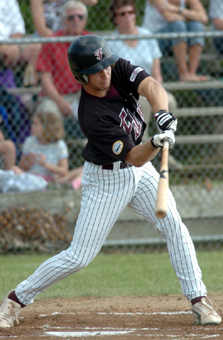 Daniel Carte
Daniel Carte
Falmouth 2004
Outfielder
Winthrop
Daniel Carte did not have a hit in the first 19 at-bats of his Cape League career.
Think about that for a second, because I think you remember what happened after that. You remember Daniel Carte, and it’s certainly not because he went 0-for-19. If you start 0-for-19, you can go 10 for your next 20, and still only be hitting around .250.
From those beginnings, Daniel Carte had one of the best offensive summers you’ll ever see.
It took him until June 23 — seven days into the season — to get a hit, but the way he got it might have been a clue of what was coming. In the bottom of the ninth inning against Cotuit, Carte led off with a walk-off solo home run that gave Falmouth a 5-4 victory. Not only was that the first hit of the summer for Carte, it gave Falmouth its first win.
The fortunes of the two would continue to improve.
Falmouth ended up with the second-best record in the league, going 25-13 after the early struggles. An impressive turnaround, but maybe not quite as impressive as Carte’s.
He was a small-school kid, not particularly tall, no jaw-dropping numbers at Winthrop. I don’t know how he kept his confidence through the 0-for-19 start. A lot of times, a bad start means a bad summer, and vice versa. The start can be everything.
Carte left it completely in the dust. The day after he hit the walk-off blast, he homered again and drove in two. The next day, he went 2-for-3 with another home run.
Yeah, he was a little streaky, but he never hit a cold spell again. He finished the summer with a .308 average, 11 home runs, 38 RBI and 13 steals. He led the league in homers, RBI, extra-base hits and slugging percentage and he was third in both hits and runs and fourth in hitting. He also became just the sixth player in league history to hit double digits in home runs and steals.
He was the total package — a shoo-in for the MVP award — and the numbers still stand up. Aside from Carte and his 38, no one in the decade had more than 35 RBI. No one hit more than 11 home runs either.
Pretty good for a guy who couldn’t buy a hit when the season began.
After the Cape
Carte’s summer vaulted him into the second round of the 2005 draft, where he was taken by the Rockies. He hasn’t found huge success yet in the minors. His best year was 2007, when he hit .283 with 14 home runs. Carte spent 2009 in Double A.